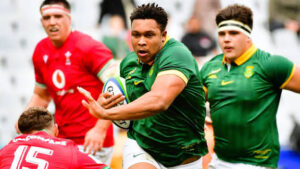Chaos at Springboks Camp: When Preparation Became Disaster

Chaos at Camp: When Preparation Became Disaster
In the lead-up to the 2003 Rugby World Cup 2003, the Springboks embarked on what was billed as a team-building “survival” camp deep in the South African bush. Dubbed Kamp Staaldraad (literally “Camp Steel Wire”), the exercise was intended to toughen the players mentally and physically. But what transpired was nothing short of a fiasco. �
According to former players’ accounts, the methods used crossed the line from rigorous into humiliating. Bare feet, bitter cold water, tunnels, nakedness, live chickens and egg-cooking tasks that players weren’t allowed to eat. �
One ex-player recalled: “We called the soldiers ‘sir’, they answered us using our service number… we had to climb nude through tunnels dug by foxes as they poured frozen water over our heads.” �
In short: what began as a bold experiment in team bonding became a public relations nightmare, internal morale breaker, and a symbol of organisational folly.
Wikipedia +3
IOL +2
rugbypass.com +1
Why Did It Go So Wrong?
Several factors contributed to the collapse of what should have been a controlled preparation exercise:
Lack of clear boundaries. The camp was run like a military operation — devoid of typical sports science oversight. The brutality of the camp “went too far”. �
rugbypass.com
Blurring of purpose. It attempted to fuse survivalism with rugby preparation. While toughness is important in sport, the activities here had little direct relevance to ball skills or match tactics. Instead they became endurance ordeals.
Loss of player agency and dignity. Being forced into freezing lakes, or standing naked in front of others, or cooking but not eating a chicken, all undermined personal dignity. The human cost began to outweigh the supposed benefits. �
IOL +1
Poor timing and accountability. The camp happened just before the World Cup squad announcement; its excesses only came to light publicly afterwards. There was little transparency and no official inquiry at the time. �
asser.nl +1
Impact on performance. It was no coincidence that the Springboks’ World Cup campaign ended ignominiously — eliminated in the quarter-finals. The camp left players drained and psychologically compromised. �
rugbypass.com +1
Fallout: Trust, Image and Legacy
The damage went beyond just poor training outcomes. For South Africa rugby, the saga triggered questions about leadership, ethics and culture.
Public outrage and media scrutiny. Leaked footage and photos of the camp circulated widely, with critics likening the players’ situation to “prisoners of war”. �
IOL +1
Calls for accountability. Former players, administrators and sports ministers demanded answers. “Reports … oblige SA Rugby and the SA Rugby Football Union to act immediately and decisively,” declared one official. �
IOL
Psychological cost. One video analyst later took his own life, and the camp’s role in his mental collapse has been discussed in hindsight. �
Wikipedia
Legacy questions. The camp became shorthand for “how not to prepare a world-class team.” Its memory haunted subsequent Springboks squads and coaching regimes.
Lessons Learned
From the ashes of chaos come a few take-aways relevant not only to rugby but any high-performance endeavour.
Extreme measures don’t always drive peak performance. Respect, clarity of purpose and relevance to task matter far more than toughness for toughness’s sake.
Human dignity is non-negotiable. Athletes may require discipline, but expecting demeaning or dangerous practices undermines team culture and trust.
Preparation must align with performance context. The Springboks didn’t need to survive freezing water; they needed to play rugby at the highest level.
Transparency and governance matter. When training programmes are opaque and unaccountable, risk escalates.
Culture is built over time, not broken down in one brutal camp. The idea that you break players to rebuild them is outdated; modern sport demands empowerment, not degradation.
Conclusion
The Springboks’ Kamp Staaldraad may stand as one of rugby’s most infamous training episodes — a cautionary tale of when ambition, poor judgement and lack of oversight collide. The “camp disaster” wasn’t a single moment of failure, but a sequence of mistakes: mis-conceived methodology, over-reaction, lack of player support, and failing to align the process with the team’s actual goals.
For the Springboks, the scars ran deeper than that 2003 campaign. But thanks in part to painful lessons like this, the team would eventually rebuild stronger, more focused and more attuned to the modern demands of elite sport.





Thanks for taking the time to create this.